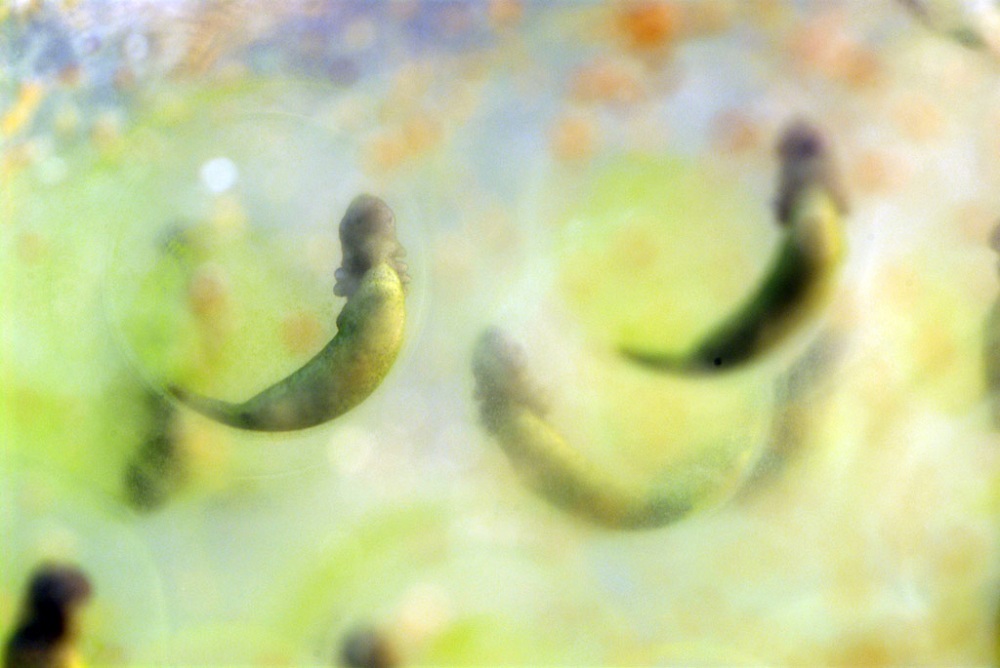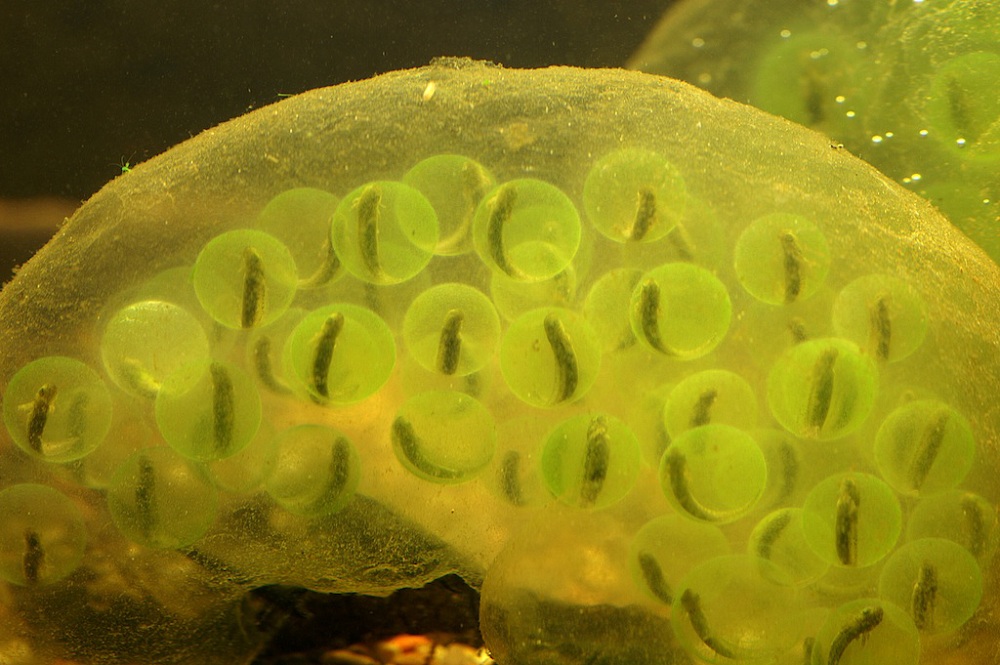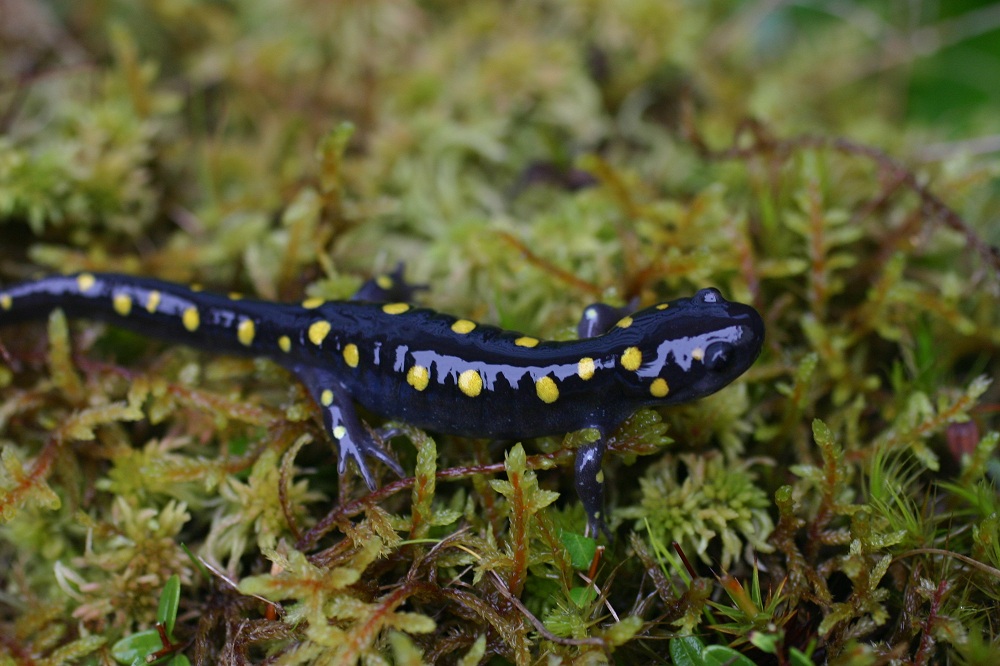Invasion of the Body Snatching Algae

Plants living inside an animal? Yep, that's what scientists found when peering inside a spotted salamander: live green algae.
While the two species may seem like strange bedfellows, their intimate, one-of-a-kind relationship is helpful for both.
"We realized that they weren't just embedded in the tissues but actually inside the cell as well, and this came as a really big surprise," said study researcher Ryan Kerney at Dalhousie University in Halifax, in the Canadian province of Nova Scotia. [Image of salamander embryos with algae]
Such a mutualistic relationship (meaning it's helpful for both species involved) has been observed between algae and several invertebrates. However, this was the first time researchers saw algae invading an animal with a backbone. Researchers previously thought it wasn't possible for the algae to make their way into the salamander's tissues, because the plants would need to evade the vertebrate's advanced immune system, which typically launch an attack on any foreign invader.
Escaping immunity
The vertebrate immune system stops invaders, but it seems the green algae are able to avoid it by sneaking in before the animal develops fully. "Salamanders would be a good candidate as an exception because they have a poor immune system; they accept grafts from other species and it's thought to correlate with their ability to regenerate," Kerney told LiveScience.
The algae not only enter the embryo's egg sack, they get inside the individual cells of the embryo, cells that eventually become the adult salamander. In the embryo the algae were detected in many different parts, including the optic cup (which becomes the eye), the epidermis (which ends up as the skin) and the neural tube (a k a the early brain structures).
Sign up for the Live Science daily newsletter now
Get the world’s most fascinating discoveries delivered straight to your inbox.

Once the algae get past the salamander's immune system, Glenn Tattersall, a researcher at Brock University, said, he isn't surprised the algae make it into the cells. "When you look at the salamander larvae — I call them pea soup — they are growing in a broth of algae," Tattersall, who wasn't involved in the study, told LiveScience. "It's not surprising that they will be in the tissues."
Breathing easier
Here's how the relationship works, the scientists figure: The salamander egg clutches are big gelatinous masses of about 100 eggs, which oxygen (an essential element for cell survival) has difficulty penetrating. When the algae are present, they keep the oxygen levels high, even in the middle of the mass, by using the salamander's carbon dioxide waste for photosynthesis (the process that, with the help of the sun's energy, turns carbon dioxide into sugars for growth, and gives off oxygen as a byproduct.) The algae also process the excess nitrogen that the embryo gives off.
Embryos infected with the algae develop faster, are more likely to survive and end up larger than their algae-less counterparts.

Most of the algae are shed by the time the salamander reaches adulthood, but the researchers noticed that the algae are still present in the reproductive tracts of some adults, and this may be one way they enter the embryos. "This may be passed on from one generation to the next or it may be acquired from the environment," Kerney said. "We suspect it may be a combination of both."
The algae haven't been found anywhere else in the environment — though not many people are looking, Kerney said.
"This suggests that the algae live in the salamander for its entire life," Tattersall said. "It only becomes symbiotic when it's exposed to light in the eggs."
The study was published yesterday (April 4) in the journal Proceedings of the National Academy of Sciences.
You can follow LiveScience staff writer Jennifer Welsh on Twitter @microbelover.
Jennifer Welsh is a Connecticut-based science writer and editor and a regular contributor to Live Science. She also has several years of bench work in cancer research and anti-viral drug discovery under her belt. She has previously written for Science News, VerywellHealth, The Scientist, Discover Magazine, WIRED Science, and Business Insider.










